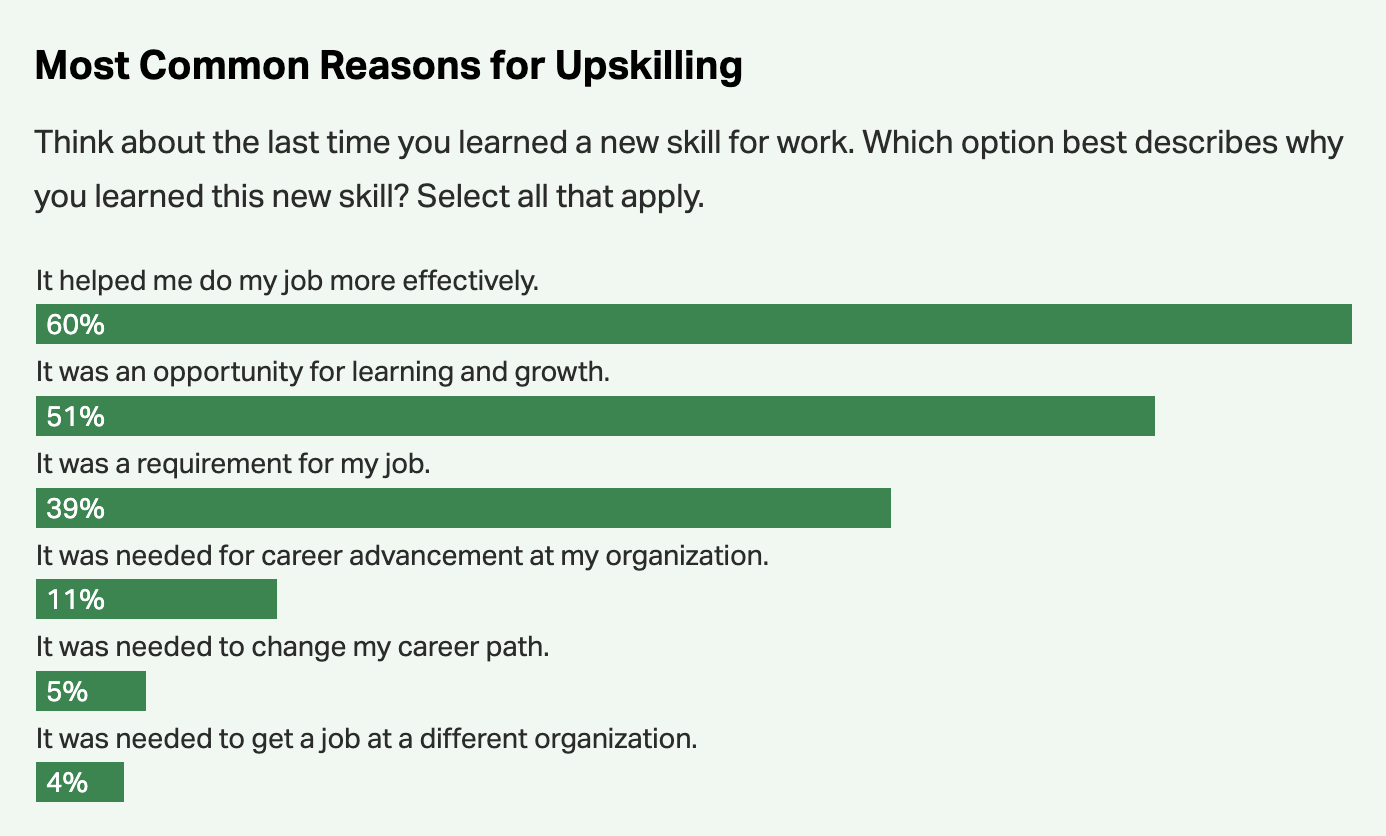6 Ways to Bring Strategy into Your Work Every Day
Business leaders are expected to be strategic, and while organizational obstacles can prevent you from translating intent into strategic actions, so can your personal limitations and practices. It doesn’t have to be this way. Even when it feels like the odds are stacked against you, you have more choices than you may realize. Small decisions about where to focus and what to do throughout your day may feel inconsequential, but their impacts accumulate. Master those small decisions and before you know it, you’ll overcome the obstacles as you pursue your strategy with greater clarity, determination, and ultimately success. The author presents six ways to incorporate strategy into your daily practices.
Being strategic — that is, making a coherent set of choices to help you pursue an ambition or goal — is a nonnegotiable skill for business leaders. But it can be hard to practice, and strategies are notoriously hard to design and deliver. Sometimes we blame organizational obstacles. For example, micromanagement dampens enthusiasm for trying something new. Incentives encourage us to stick to the status quo. Poor communication makes it hard to know where to focus.
But often it’s our mindsets and behaviors that are the most limiting. At the extreme, burnout inhibits our ability to make decisions. Anxiety limits our field of vision. Overwhelm makes it harder to figure out where to start. Lack of confidence encourages us to focus on the near term. As a result, we switch on autopilot as we default to habits that help us focus on the familiar. But this is often not what the strategy requires or what we want for ourselves. It’s no wonder we get frustrated by the lack of progress toward our goals.
It doesn’t have to be this way. Even when it feels like the odds are stacked against you (especially in the most bureaucratic organizations), you have more choices than you may realize. Small decisions about where to focus and what to do throughout your day may feel inconsequential, but their impacts accumulate. Master those small decisions and before you know it, you’ll overcome the obstacles as you pursue your strategy with greater clarity, determination, and ultimately success. Here are six ways to incorporate strategy into your daily practices.
Identify the actions that matter
Every day there are opportunities to focus more attention on events, situations, or activities that make a disproportionately positive contribution to a strategy.
Consider Mary*, a CEO I worked with, who felt out of control of her time. “I’m so overwhelmed by requests and meetings that I hardly have any time to focus on the important stuff,” she told me. She was also underperforming in the eyes of her team and external stakeholders.
I asked her what she would like to focus on. Without hesitation, she talked about her biggest customers, the board, priority initiatives (from new ventures to organizational culture), and time to think. I asked her to map out a best-possible week, reflecting on her preferences as well as responsibilities. Within days, she had made substantial shifts in focus, delegated more tasks to others, and reduced time spent in nonurgent meetings. Most importantly, she felt she was more decisive and productive.
To do this, first write down your team’s strategy, including how it contributes to the organization’s strategy. Second, select a window of time to focus on, such as the week ahead. Third, write down the best actions you could take (or encourage others to take) in critical moments to increase the chances of your strategy succeeding. As you put your ideal schedule together, set aside time to focus on these impactful actions:
- Making critical decisions, such as where to focus, how to win, where to deploy resources, and how to incentivize people.
- Identifying and interpreting signals from customers and employees, then figuring out how to respond.
- Convincing colleagues to think and act in new ways — for example, anticipating the needs of future customers.
- Tackling difficult behaviors that impede progress, such as bullying or overconfidence, and rewarding exemplary behaviors.
Also add in time for being visible with employees and stakeholders as well as for the governance tasks you can’t get out of, such as making approvals and attending meetings. Include a buffer for emergencies, and whenever possible, say no to anything that could be an unhelpful distraction.
Focus on the most important problem
For each of these moments, focus on the biggest problem that needs to be addressed, then consider how overcoming the problem will make a positive contribution to the strategic outcomes you want to enable.
Tom, a CEO, starts every session with a direct report or his executive team by asking three questions:
- What is the biggest opportunity we have to address? (Notice how he frames problems as opportunities.)
- Why does it matter? In other words, how does addressing this help us achieve our strategy?
- What do we need to do to address this opportunity?
This routine has become so embedded in the business that Tom’s team comes prepared to answer those questions without him asking. The simplicity of the questions and consistency of framing makes it easier for everyone to contribute.
Explore the choices you face
In any moment — a task, conversation, email exchange, or meeting — there are more choices about what you can do and how you can show up than you might realize, all of which can contribute positively to the strategy. This optionality relates to your:
- Role: What does the moment and problem most need from you, such as an idea, challenge, insight, or experience, in addition to any formal role you play? For example, while you lead on the growth agenda because of your chief marketing and sales officer role, you might also want to wear a risk “hat” as you consider a new business opportunity.
- Distinctiveness: What can you bring to the moment that others can’t?
- Impact: What do you want people to feel, think, and do because of your intervention? What impression do you want to leave through what you wear, how you hold yourself, and what you say?
- Learning: What do you want to learn more about, whether in relation to the topic, situation, or the people involved? What should you be looking out for in the interaction?
Michael, a CFO, had to write a board paper for the CEO to review before submission. He was keen to showcase his strategic thinking and creativity as he positioned himself as the successor to the CEO. Rather than putting together the typical long, written document, he took the opportunity to produce a short video of him talking through the key points, alongside a visual that illustrated the new venture and a succinct five-page written document that outlined the benefits, structure, and actions required. It resulted in a stimulating discussion, sign-off of the venture, and very positive feedback about his contribution.
Master the capabilities required
In each of these moments, consider what you need to master to make the best possible contribution. It could be a new way of thinking or a skill you need to demonstrate, such as presenting, decision-making, or negotiating. Apply a good attitude and plenty of grit and focus on the specific improvements you can make. This could involve:
- Learning lessons from previous efforts.
- Asking people who know you well for advice on what you should do better.
- Observing people (or even better, working with people) who operate at a higher level of proficiency.
Patricia, a president of a large business unit, took on more customer-facing activities following a company restructuring. Her priority was to ask the top 10 clients what they valued and what they missed from her team. It was hardly a radical approach, but it was her focus on mastering three capabilities that made her stand out in the eyes of her customers and coworkers:
- The persuasiveness and eloquence of her email.
- The impact of the first minute of conversation.
- Her empathy for the customer’s interests (based on extensive homework).
She found that customers responded favorably and openly, which helped her team sharpen their focus on what those customers valued.
Create alignment between elements of the strategy
In an ideal world, the individual strategic choices you make will fulfil the needs of your stakeholders, organization, business unit, and team in addition to your own.
The reality is that it’s often hard to achieve this alignment and aggregation, at least at first sight. This is because there are:
- Trade-offs: The organization’s leadership requires something different from what the team is interested in doing, at least for a while. (E.g., the team wants to move into a new market, but the corporate strategy says “hold.”)
- Lags: It takes time for a decision to flow through to actions that reflect your interests. (E.g., it takes time to shift resources or change incentive structures.)
- Missing information: You may not know much about a situation or an issue because there’s missing information or you’re in new territory, which requires a leap of faith at a time when you may prefer more certainty.
Reframing the situation can help you reduce this misalignment. For example, imagine your personal career goal is to pursue intrapreneurial activities, with a view toward eventually starting your own venture. You also lead a self-managed team that is at the heart of your company’s growth engine, delivering services that customers love.
Now imagine you’re expected to refocus your business unit on improving short-term profitability that will fund the growth of a higher-priority business unit in the portfolio. While imminently sensible from a company perspective, it feels limiting (and too operationally orientated) to you. And you can’t move to the other business unit, at least not immediately, or leave the organization.
To reframe the situation, ask yourself: What is the most innovative way I can approach the task of improving my business unit’s short-term profitability? This reframing increases your chances of fulfilling the organization’s needs as well as your own.
Assemble the resources you need
It’s hard, if not impossible, to make smart choices about where to focus and what to do day in and day out if you’re depleted. But many people are, as they run from meeting to meeting, chase deadlines, and pursue a never-ending list of goals.
Use two types of resources wisely. First, develop the foundational portfolio of resources you need to perform at your best, which include healthy nutrition, good exercise, enough sleep, personal interests, and strong relationships with your spouse, family, and friends. Second, develop these additional resources to help you make wise choices in the moment:
- Mental: Use visualization, memories of past successes, and your sense of purpose to encourage positive thinking.
- Relational: Surround yourself with people who amplify and complement your contribution.
- Environmental: Create the best possible place to get your work done, whether in an office or at home or elsewhere.
While we often focus on organizational obstacles, our personal limitations and practices also prevent us from translating intent into strategic actions. The good news is that there are plenty of opportunities to make systematic choices throughout the day that increase your chances of making your strategy a success.
David Lancefield – hbr.org







